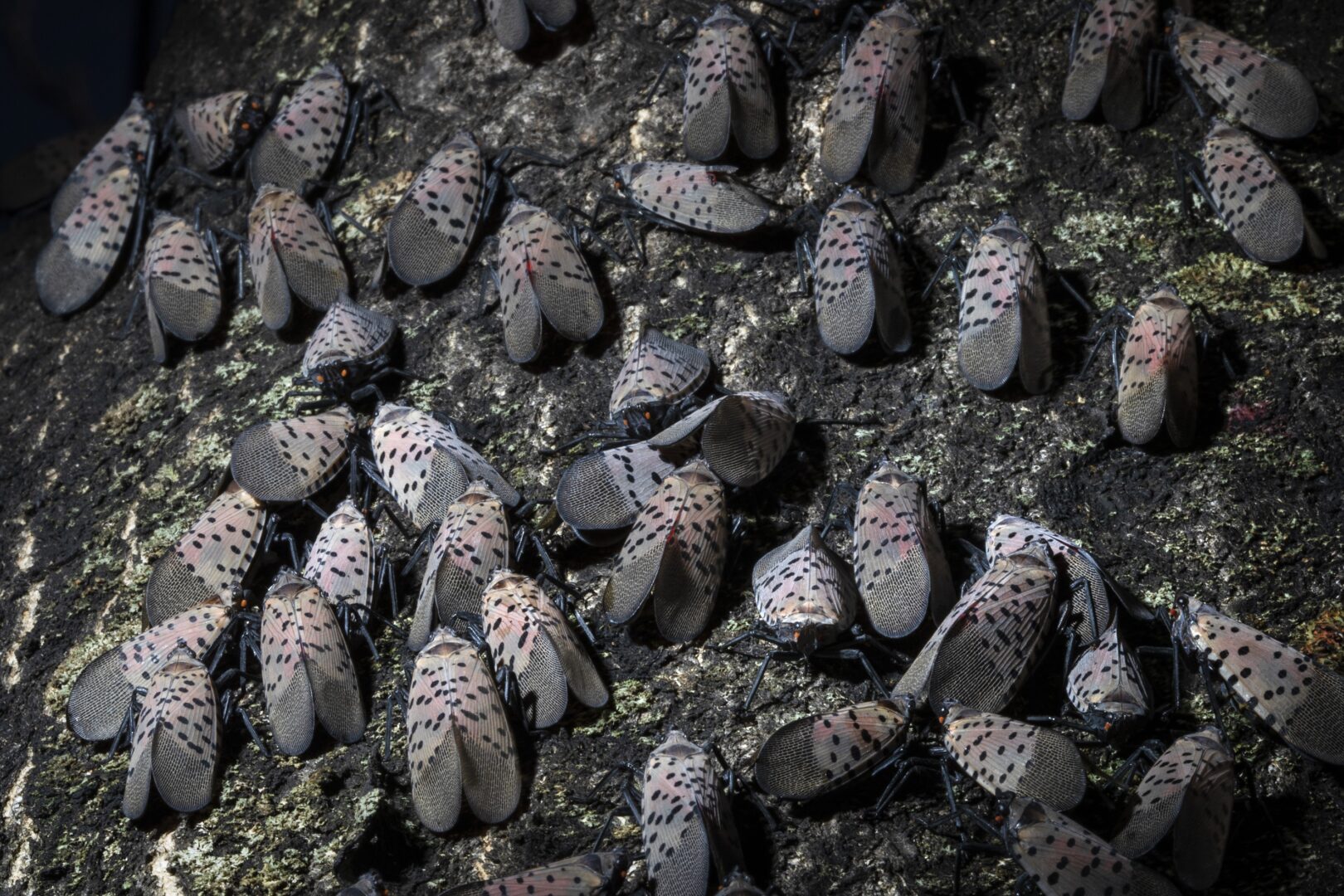
In this Thursday, Sept. 19, 2019, photo, spotted lanternfly gather on a tree in Kutztown.
Matt Rourke / AP Photo

In this Thursday, Sept. 19, 2019, photo, spotted lanternfly gather on a tree in Kutztown.
Matt Rourke / AP Photo

Matt Rourke / AP Photo
In this Thursday, Sept. 19, 2019, photo, spotted lanternfly gather on a tree in Kutztown.
Airdate: March 23, 2023
Invasive insects, plants, pathogens and animals are wreaking havoc on Pennsylvania’s waterways, forests, trees and wildlife.
A statewide survey conducted by the Pennsylvania Governor’s Invasive Species Council found more than 100 invasive species that includes spotted lanternfly, mile-a-minute vine, Japanese stiltgrass, zebra mussels and more.
On The Spark Thursday to discuss the spread of invasive species and what the state is doing about it was Fred Strathmeyer, the Pennsylvania Department of Agriculture’s Deputy Secretary for Consumer Protection and Plant Industry and chair of the multi-agency Governor’s Invasive Species Council, who gave examples of the harm invasive species are doing,”Economically you can go to the marmorated stink bug that has we’ve seen do damage in our fruit crops millions of dollars and that just that’s something that has been been put out there in the last couple of years initially when as you know, it was more of a nuisance then it was thought to be an economic impact. You look at the emerald ash borer. Emerald ash borer has devastated the ash forest. You know that to the point where very few native ash are still around. A hugely profitable economic impact to that was an economic driver here in the state — baseball bats. And now we have very few ash native to the state of Pennsylvania. So, those would be two real quick ones. But here’s obviously a list — what has now become spongy moth to your viewers or to your listeners would be gypsy moth in the past, but spongy moth. And again, you don’t have to go very far to see devastation in our oaks across the state of Pennsylvania.”
Strathmeyer talked about stopping the spread of invasive species,”Every day, whether it’s our agencies, whether it’s nonprofits, conservation districts, they’re all working together to partner to deal with an invasive in their area. One of the things to remember is that invasives become very personal after a while. It’s about your fishing hole that used to go to or your area in the woods that you used to be able to walk to. Now, the undergrowth is filled with an invasive type of plant that no longer can you walk in the woods. It’s about the undergrowth that has been devastated in some areas of the state where we no longer have the regeneration that we need of the of the appropriate plant material.”
The state is working on a plan to keep invasive species from spreading on a regional basis.
The days of journalism’s one-way street of simply producing stories for the public have long been over. Now, it’s time to find better ways to interact with you and ensure we meet your high standards of what a credible media organization should be.